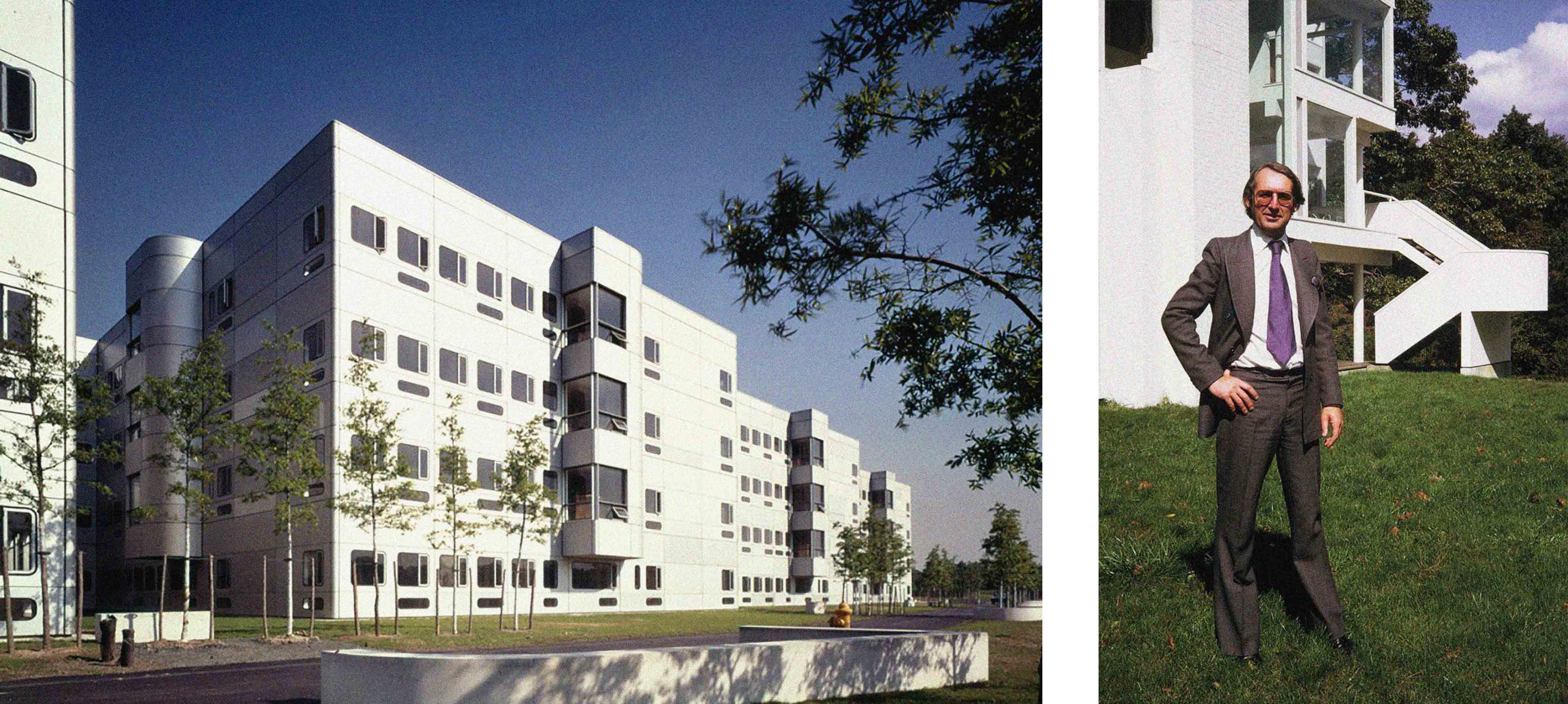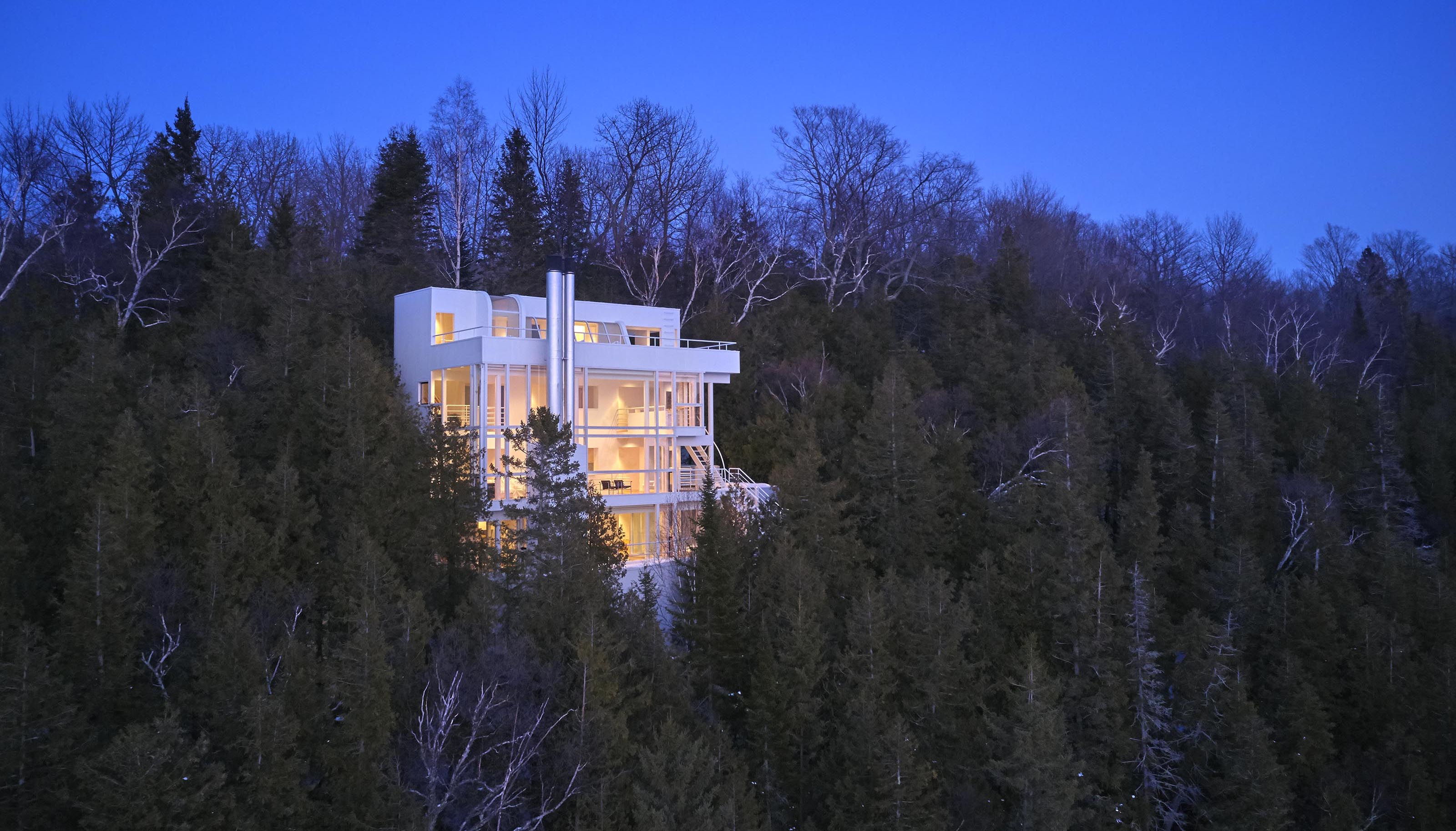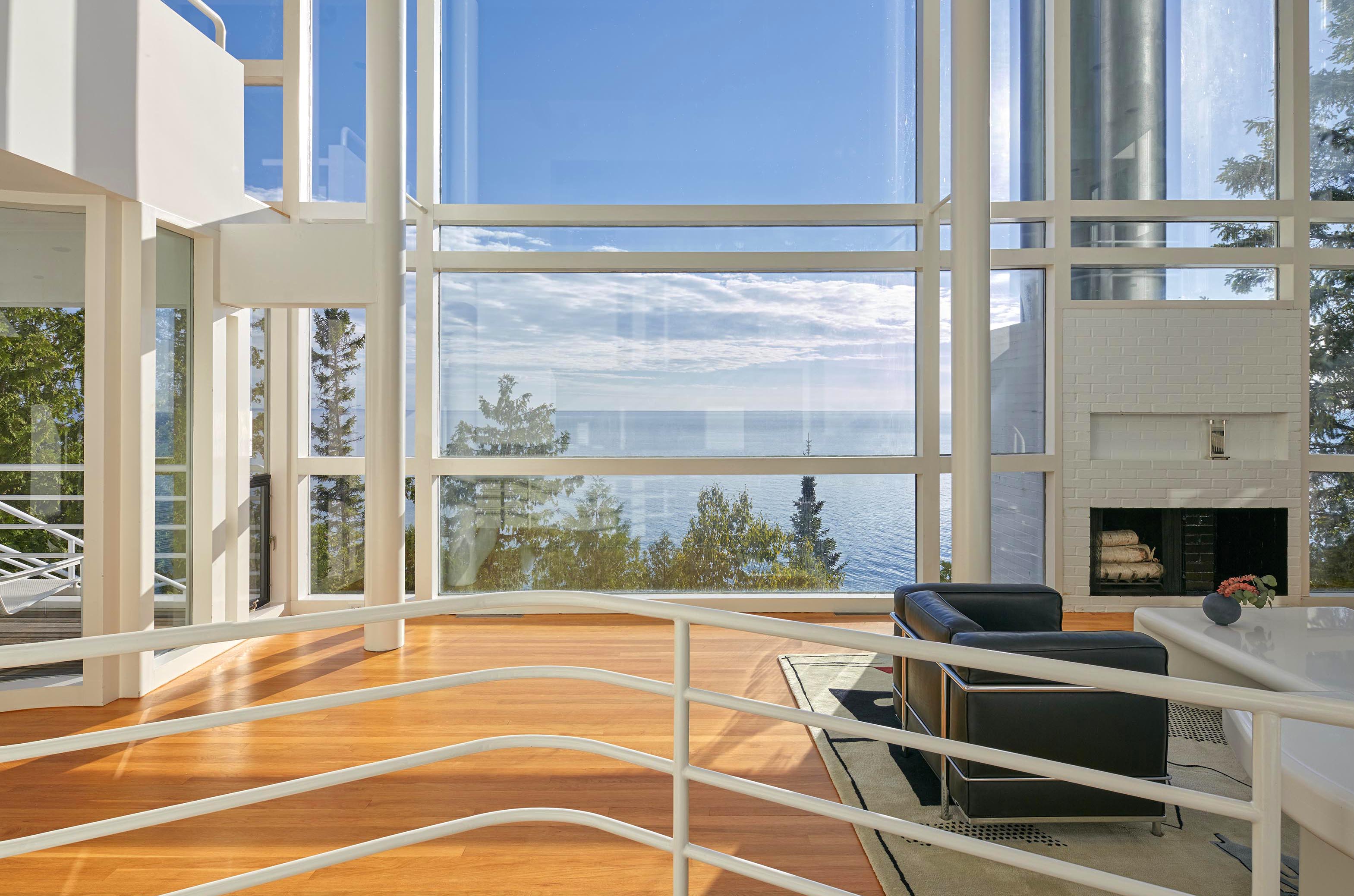Douglas
House
The
Precedents
A number of architectural theorists and practitioners – from academia and the offices of the world’s great modernists – influenced the Douglas House design.
In 1963, the year Richard Meier established his New York studio, he was also a visiting professor at the Princeton School of Architecture. Two others at Princeton would later raise their own profiles significantly within the profession.
“The junior faculty at Princeton in the early 1960s was remarkable – Peter Eisenman, Michael Graves, and Meier were all there,” says Henry Smith-Miller, a Princeton student at the time. “Robert McLaughlin, then director of the School of Architecture, was responsible for their hires."
McLaughlin was best known for his innovative designs and low-cost public housing projects in Lower Manhattan, modeled after Le Corbusier’s Plan Voisin and Ville Radieuse. "But everyone at Princeton was familiar with Le Corbusier’s work," he says.

Meier was first out of the gate with a major project – the $17 million Bronx Development Center. He’d been preparing for it most of his adult life. After graduating from Cornell, he’d worked first for Skidmore, Owings & Merrill, then for Marcel Breuer.
“Meier took Breuer’s work as precedent for his own practice,” Smith-Miller says. “Breuer had worked for Mies, who was ever-so-keen on details – as were Breuer and Meier.”
To help organize the Bronx project in 1970, Meier brought in Frank Harmon, a North Carolinian living in London after graduating from the Architectural Association there in 1967. Tod Williams joined the studio ini 1967 after graduate school at Princeton, and Smith-Miller became part of the team in 1971.
When the Douglas House commission came along, Le Corbusier was on the minds of many. “Richard was one of several architects who revered and revived Le Corbusier through both the Smith House and the Douglas House,” Williams says. “It was the beginning of postmodernism, but with an emphasis on the ‘modern.’”

The Douglas House is a building that also articulated one of Cornell theoretician Colin Rowe’s concepts. “In various ways, we were influenced by Colin’s ideas of layered transparency,” Williams says. “It was definitely influential as we thought of the house.”
The entire DNA makes the Douglas House an extremely important late-20th-century project, one on which architects worldwide quickly began to model their work. “The Douglas House was one of the touchstones for them all,” Harmon says.
Meier knows why. “There’s movement and a separation of openness and enclosure,” he says.
From the roadside, it’s opaque. But on the lakeside, it frames, reveals, and embraces the majesty of nature.
